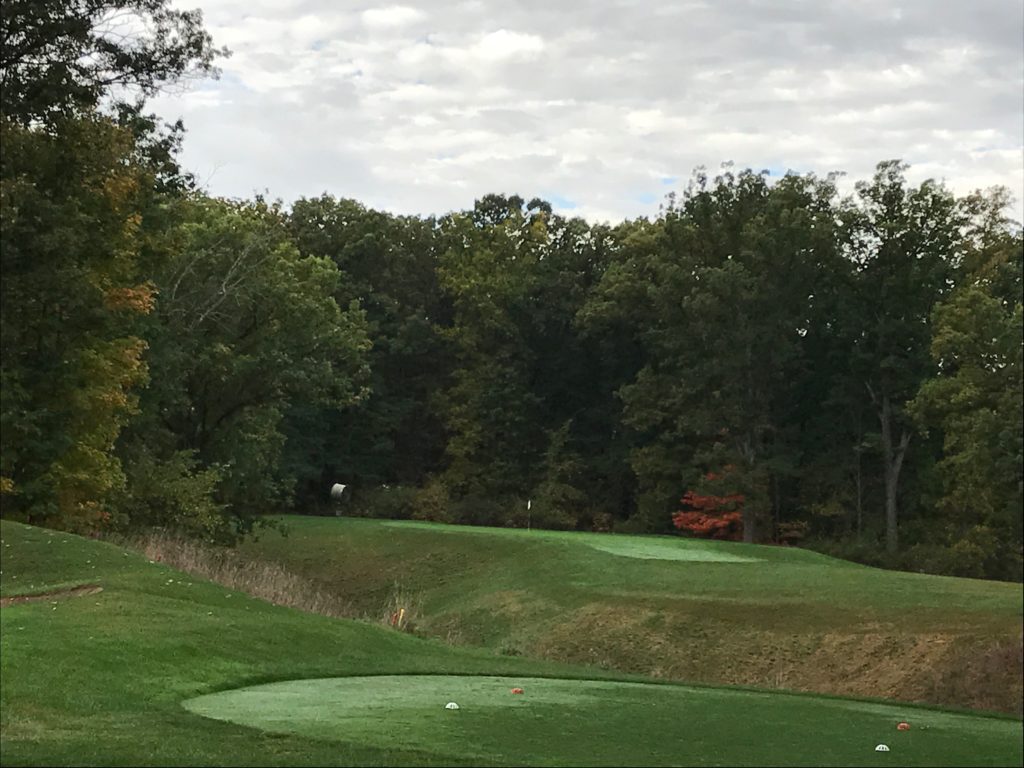Just outside of the Cleveland city limits at the northwest edge of Cuyahoga Valley National Park, the Cleveland Metroparks owned Sleepy Hollow Golf Course unfolds over an ideal tract of land for golf. Never one to try and outdo natural beauty, Stanley Thompson melded Sleepy Hollow into the contours, crevices, creeks and craters of the sensational site. The original design remains largely untouched and the attention to detail on the conditioning combine for a pleasant and memorable round in the Cuyahoga River Valley.
Sleepy Hollow makes it quite easy for the visitor to dispense with any negative images one may hold of the City of Cleveland and, with any additional effort, such a Cleveland visitor would realize that the City and surround are full of vibrance and culture. As for the City’s golf, the Metroparks also boasts Manakiki Golf Club, a top municipal course in the USA and also the public access Fowler’s Mill. Manakiki and Fowler’s Mill tout Donald Ross and Pete Dye as their respective architects. Together with Sleepy Hollow, these muni’s rival the private enclaves of Canterbury, the Country Club and Kirtland.
Out of the gate at Sleepy Hollow, the opening downhill par 5 allows for some big sweeps to a diabolical green, followed with the demanding 200 yard plus second and the wild ride par 4 third. At this point, the golfer has been snatched by the scruff of the neck and slapped into realization that this is a championship track requiring a good bit of game. The sparks continue to fly on the par 5 fifth with the first look at several barancas that criss-cross the property. The two par 3’s on the way in on 6 and 8 are equally gorgeous and difficult and manage to tie the routing together in a seamless fashion.
The inward half kicks off with the difficult 10th backed up with the scenic downhill 11th. With seven holes still on the slate, it is quite apparent that Sleepy Hollow features awesome driving ground framed by dense forests and strategic bunkering. It is not a stretch to see parallels to Thompson’s work on Cape Breton at Highland Links or St. George’s Golf & Country Club in Toronto. The twelfth is a super three, then thirteen and fourteen present old school blind tee shots with the former leading to a well guarded green and the latter posing risk/reward options in pursuit of a par 5. Fifteen and seventeen are marvelous short 4’s and sixteen and eighteen are pound and approach 4’s of another color. The back nine greens are a good bit more radical than the front and would certainly be unmanageable if the stimp hit 12 or above.

Lest we forget, Sleepy Hollow is also the former home course of the late, great Charlie Sifford. An African-American in a White man’s game, I well remember watching Stifford play in the National Four Ball Championship at Laurel Valley Golf Club in 1970. Sifford was a striking player, all the while chomping on a cigar. Mr. Sifford teamed with his nephew Curtis Sifford (also from Cleveland) and they were a formidable pair adding much needed diversity to the Tour. (Footnote: African-American Lee Elder teamed with Bob Murphy in the event). Sifford’s Tour wins at Hartford and Los Angeles did not rate a Masters invite, but the man persevered throughout these turbulent times on his way to a Hall of Fame induction.
Sleepy Hollow is another must play. Grab the sticks and plan your trip to Cleveland. The fabulous golf can be backed up by a visit to the Rock n’ Roll Hall of Fame, the Cleveland Museum of Art and a fine meal in Little Italy.


